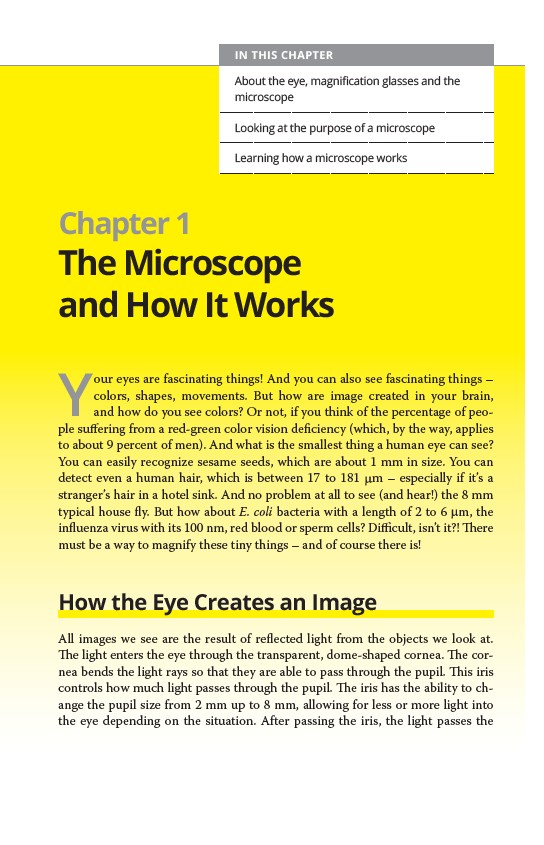
IN THIS CHAPTER
About the eye, magnification glasses and the
microscope
Looking at the purpose of a microscope
Learning how a microscope works
Chapter 1
The Microscope
and How It Works
Your eyes are fascinating things! And you can also see fascinating things –
colors, shapes, movements. But how are image created in your brain,
and how do you see colors? Or not, if you think of the percentage of peo-
ple suffering from a red-green color vision deficiency (which, by the way, applies
to about 9 percent of men). And what is the smallest thing a human eye can see?
You can easily recognize sesame seeds, which are about 1 mm in size. You can
detect even a human hair, which is between 17 to 181 m – especially if it’s a
stranger’s
hair in a hotel sink. And no problem at all to see (and hear!) the 8 mm
typical house fly. But how about E. coli bacteria with a length of 2 to 6 m, the
influenza
virus with its 100 nm, red blood or sperm cells? Difficult, isn’t it?! There
must be a way to magnify these tiny things – and of course there is!
How the Eye Creates an Image
All images we see are the result of reflected light from the objects we look at.
The light enters the eye through the transparent, dome-shaped cornea. The cornea
bends the light rays so that they are able to pass through the pupil. This iris
controls how much light passes through the pupil. The iris has the ability to change
the pupil size from 2 mm up to 8 mm, allowing for less or more light into
the eye depending on the situation. After passing the iris, the light passes the